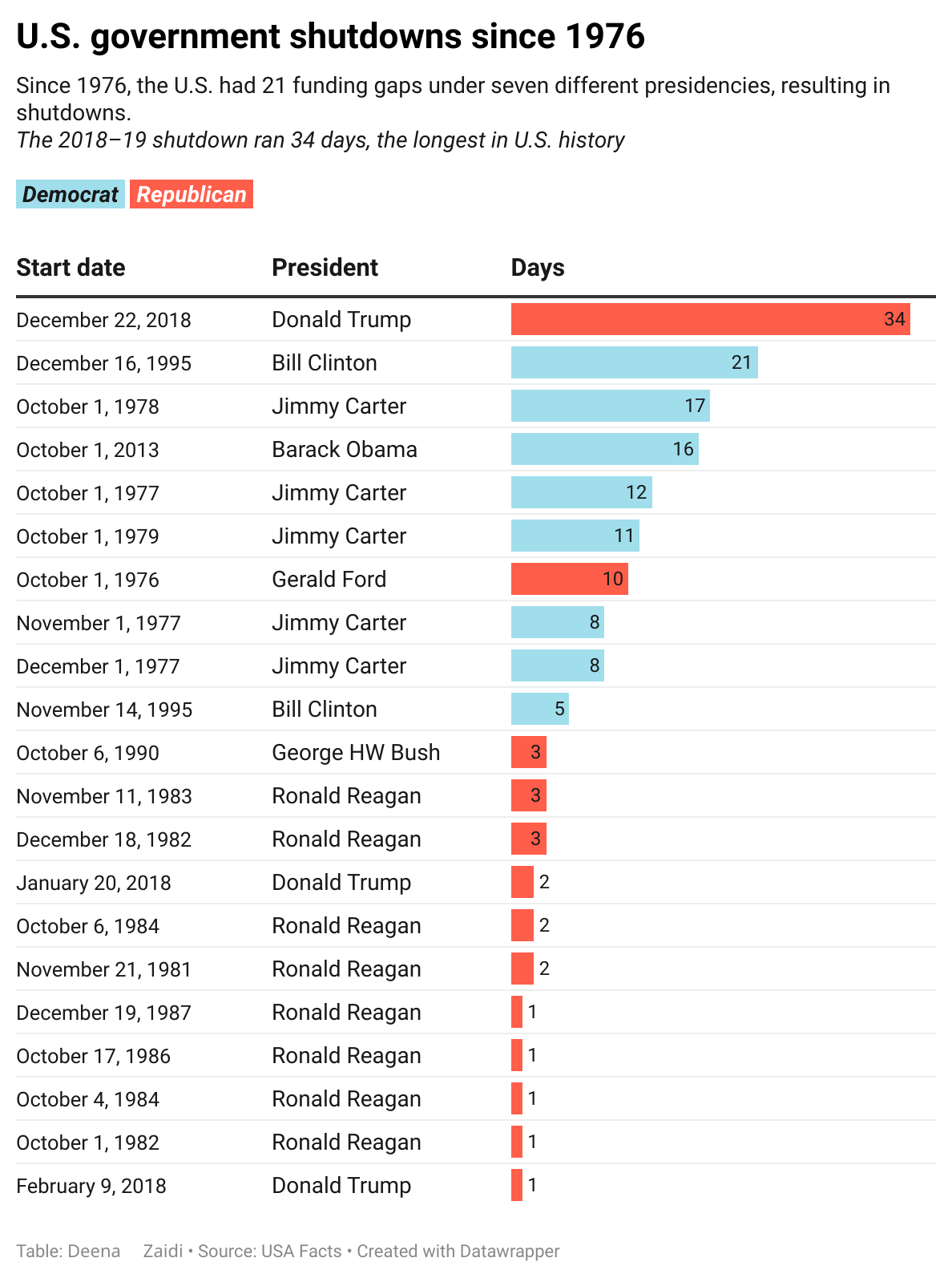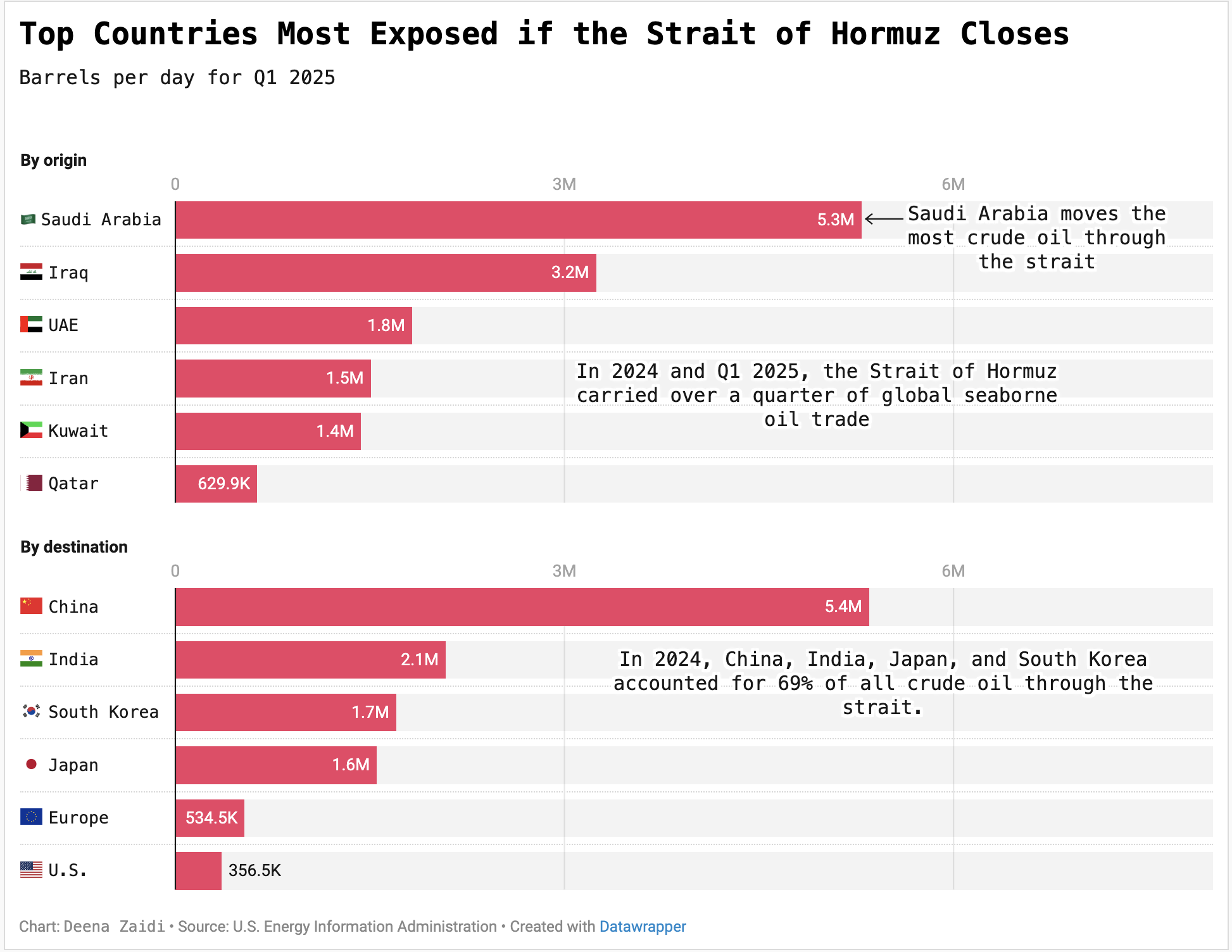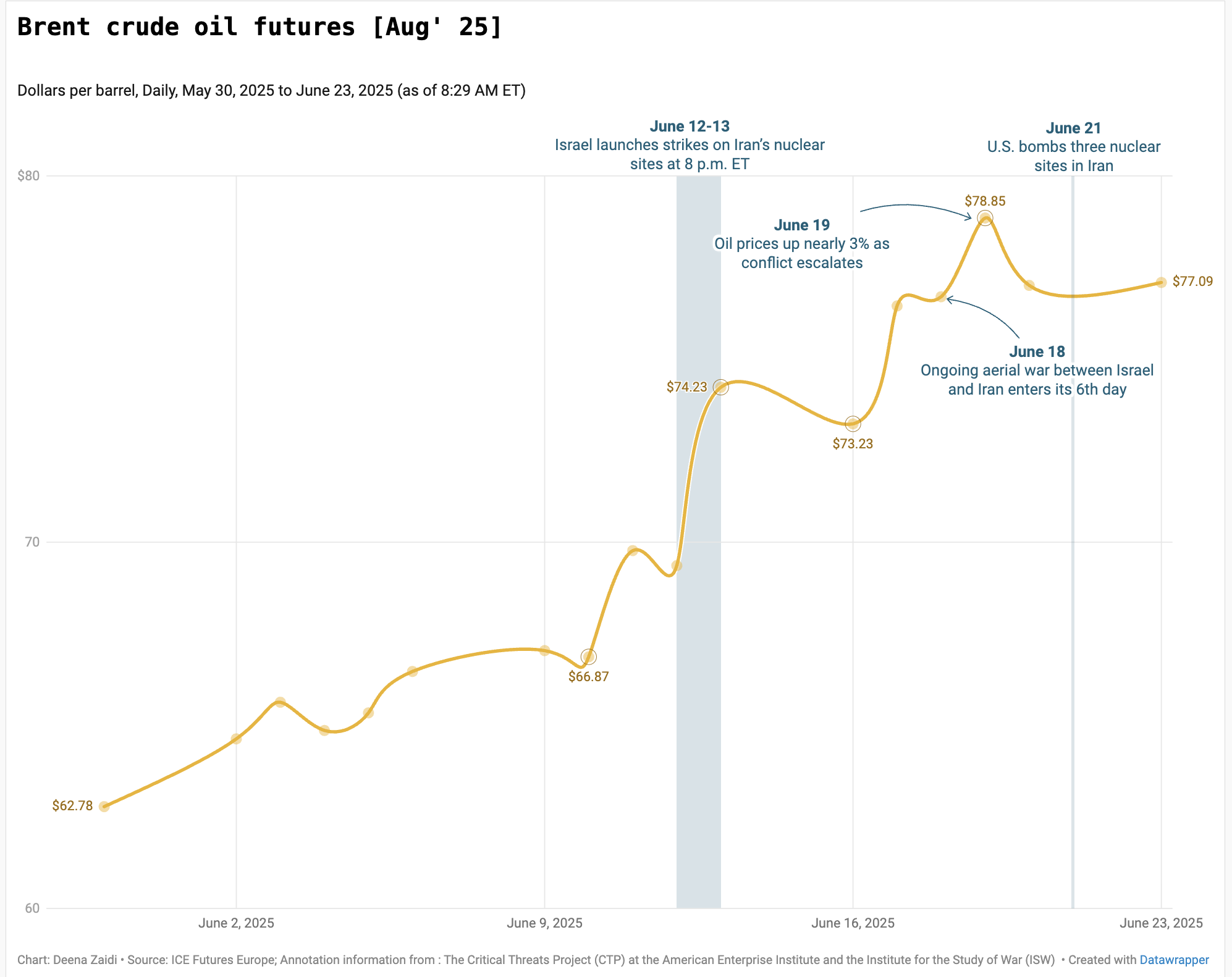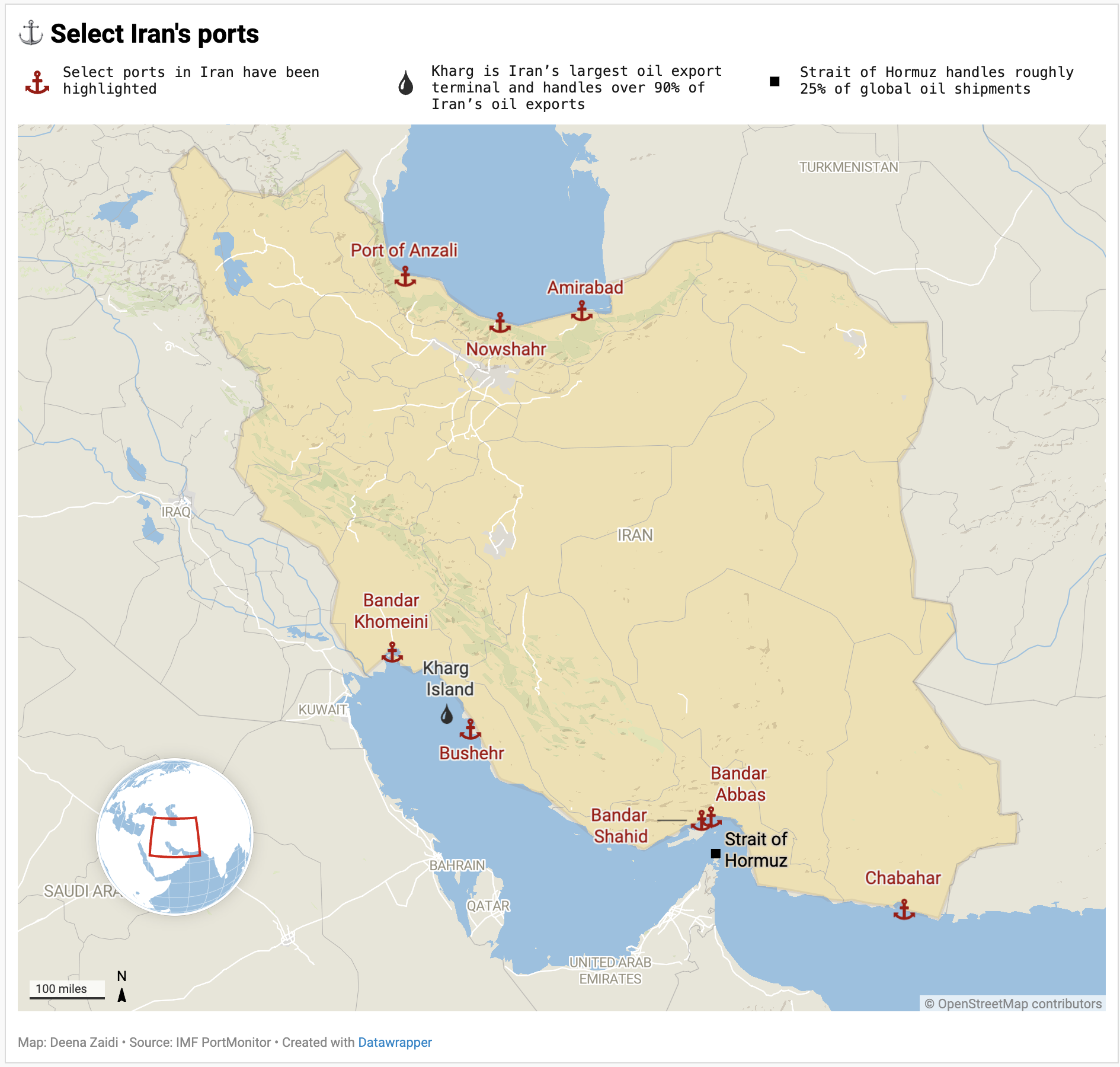Here’s a list of All U.S. Government Shutdowns and Their Duration Since 1976

Data and Financial Journalist

Here’s a list of All U.S. Government Shutdowns and Their Duration Since 1976

Over a quarter of global seaborne oil flows through the Strait of Hormuz—making Asia’s top economies especially vulnerable to any disruption.

Roughly 20% of global oil and LNG flows through the Strait of Hormuz—making any disruption a potential shock to global energy markets.

Israel’s strikes on Iran’s strategic sites have sent Brent crude and gold prices sharply higher, while potential threats to Kharg Island and the Strait of Hormuz chokepoints could force shipping reroutes, risking wider global supply-chain disruptions.